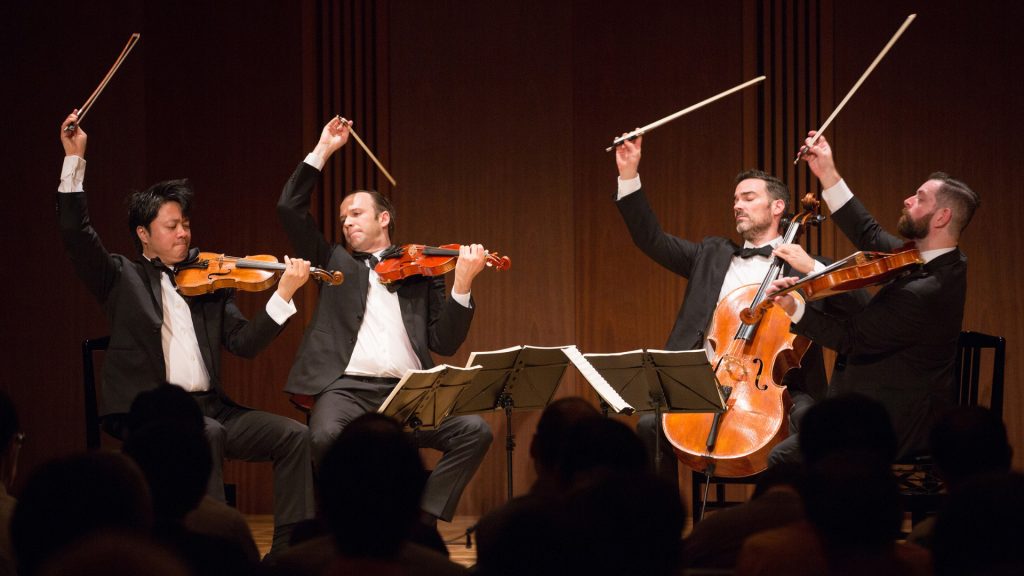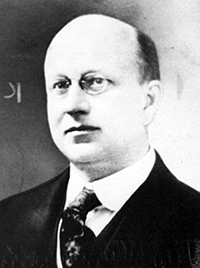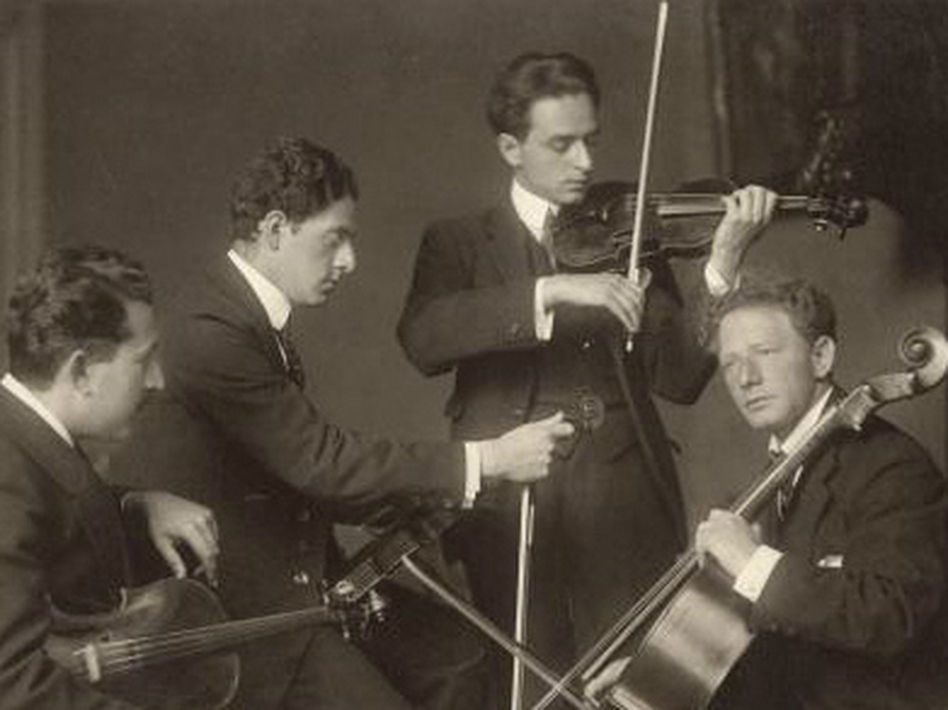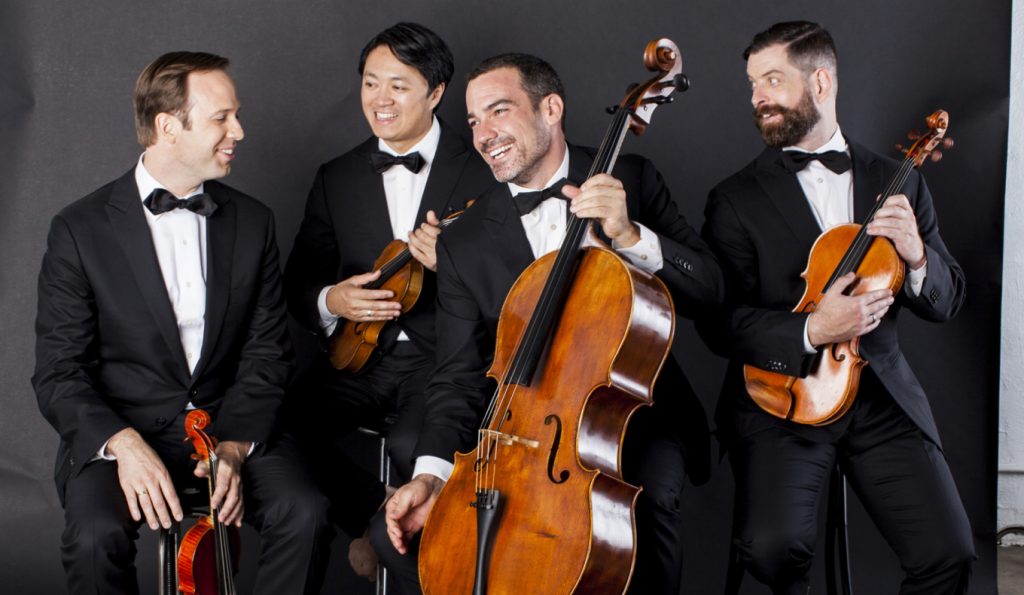Beethoven in Buffalo: “A Wonderful Gift for Music Lovers”

Beethoven fans have a strong sense of place. They revere Bonn, Germany, where their hero was born. And Vienna, Austria, where he lived, died, and was buried.
And, in a twist of fate, they revere Buffalo.
Buffalo offers an amenity unique in the world. Every year, our city plays host to a complete cycle of Beethoven string quartets, featuring the world’s top ensembles. Other burgs might be lucky enough to enjoy a once-in-a-lifetime live journey through this music. However, nobody else has this treat every year.
This unique offering came about thanks to one man, a lawyer named Frederick Slee. Slee’s name is on Slee Hall, the University at Buffalo’s concert hall. He was widely admired as a corporate lawyer, and he also loved sailing. But it is because of music that he is remembered.
A professionally trained musician, Slee had a music room built into the Saybrook Place home he shared with his wife, Alice. They held concerts there. And when he died in 1954, he left an annuity providing for the performance each year of all 16 Beethoven quartets – along with the demanding “Great Fugue.” The quartets, the Slees specified, were to be performed at UB by “artists of outstanding excellence.” Organizers followed that directive from the start.

The first quartet to perform the cycle, in 1955, was the Budapest Quartet. These four Russian musicians – first violinist John Roisman, second violinist Alexander Schneider; violist Boris Kroyt; and cellist Mischa Schneider –were, at the time, the world’s greatest quartet. Their albums had sold over two million copies.
They had bonded with Buffalo in the days they played in the Statler Golden Ballroom for the Buffalo Chamber Music Society. Now they embraced the Slee series, becoming quartet in residence at UB. Mischa Schneider, the group’s cellist, even settled in Buffalo’s Allentown neighborhood for good.
When the Budapest musicians retired in the late 1960s, they passed the torch to such now-legendary groups as the Cleveland Quartet, the Amadeus Quartet, and the Guarneri Quartet.
In 1971, the New York Times covered a Slee performance by the Guarneri Quartet and marveled at the full hall, and the beards and tie-dyes prevalent in the audience. The cycle’s mystique continues to this day.
“I love to go to the Chamber Music America Conference in New York every year,” says UB Concerts Manager Philip Rehard, who has overseen the Slee Cycle since 1991. “Every string player says to me, ‘You’re the guy who runs the Slee Cycle!’”
The Slee cycle has made music history. Arnold Steinhardt, the first violinist of the great Guarneri Quartet, wrote about that in an article for a new book marking the 100th anniversary of the Buffalo Chamber Music Society.
Steinhardt, fresh out of college, was driving to Cleveland in the fall of 1959 to become assistant concertmaster with the Cleveland Symphony. “Suddenly, an exit sign for Buffalo appeared, and on impulse I pulled into the next gas station and called Mischa Schneider to say hello. As ever warm-hearted, Mischa immediately invited me to dinner, and to the first of the quartet’s Beethoven cycle concerts that night.”
Over dinner, Steinhardt writes, he was stunned to learn that the Budapest musicians had not rehearsed for the concert that night. They had not rehearsed for months. When the concert began, he marveled, it didn’t matter one bit.
“Without any noticeable lead from Roisman, the opening chords of Beethoven’s Quartet Opus 127 in E Flat rang out with the kind of stentorian character that announced not only the beginning of this quartet, but also the entire Beethoven cycle. “I will never forget that magical concert, and the long-term effect it must have had on me.”
As The Buffalo News’ classical music critic, I interviewed Steinhardt almost 20 years ago, and naturally we talked about the Slee cycle.
“What a thing to do,” Steinhardt said on that occasion, “What a wonderful gift for music lovers and the city. It’s just sensational, this idea. I wish other cities did this. I wish we could clone Buffalo.”

A call from Lincoln Center
Rehard is always being reminded of the cycle’s importance to the world. He laughs remembering the day the phone rang, and it was New York City’s Lincoln Center.
“They were getting ready to present a Beethoven quartet cycle, and they were hoping we’d collaborate with them, to hire their resident quartet to perform the cycle,” he said. “And they wanted to use the Slee order.”
The Slee bequest stipulated the specific order in which the quartets were to be performed.
“People have always looked at the order established by the Slees with interest, because it’s unusual,” Rehard says. “When people are presenting a cycle of Beethoven quartets, the question is always, how? Chronological is one idea. Maybe that makes sense. But the Slees had a different way of thinking about this.”
The six concerts each include a quartet from Opus 18 – a set of six quartets Beethoven wrote as a young man – as well as a “middle period” quartet, and a “late Beethoven” quartet. Not necessarily in that order.
“It boggles everyone’s mind that the cycle opens with a mammoth quartet,” Rehard says, alluding to Opus 127, the quartet Steinhardt recalls hearing the Budapest play.
“However, when people listen to it, it sounds very agreeable and makes an awful lot of sense to them.”
Rehard remembers an evening in 2000 when one ensemble, the Penderecki Quartet, attempted to change their concert’s order. “In a spur of the moment discussion, they were standing backstage, and they said, ‘It might make more sense if we switched the order of the quartets in the first half.’
“I’m in the audience – this was five minutes before they were going to go on stage – and they looked at my student assistant, who didn’t understand the significance of the order – and they said, ‘’How would you feel if we switched the order of the first two quartets?” The student said, ‘I don’t care.’”
“They walked out on stage, said they were going to switch the order, and the audience went: ‘Aaauughh!’” Rehard does his best to imitate the outraged roar.
“Back in the day, I never put the program order that Slee specified in the contract. I do now, because of this one story.”

‘My wife sneaked me in’
Go to a Slee Beethoven concert – everyone in Buffalo should, at least once – and you will notice a good number of listeners are by themselves. Some bring scores and follow along with the music.
Bonds grow between audience and ensemble. Rehard remembers with emotion the farewell concert by the famed Tokyo Quartet, who had formed a close relationship with the cycle over the years.
“That was the year I had my heart attack,” he says. “I wasn’t supposed to be at UB, but my wife sneaked me in. My doctor gave me strict orders not to go anywhere near work,” he admitted. “But there was no way I was missing that concert.”
Other concerts also stand out in his mind. He remembers the Miro Quartet, with his permission, playing the “Great Fugue” with the quartet it was originally part of. “People went crazy,” he says, happily. “They also played the alternate movement, so everyone was happy.”
One year, the cycle welcomed almost exclusively European quartets. “They all played encores,” Rehard says. Encores on the Slee series are, for whatever reason, not customary.
Rehard grows wistful contemplating the cycle’s history.
“The time has long passed, but one of my regrets is that when I was younger, and maybe a little less aware of the historical significance of what was taking place, I know there were people attending concerts who said that they had never once missed a Slee Beethoven concert since their inception,” he says. “I wish I had done something to document that. Those people aren’t around anymore.”
Such nostalgia reminds him of the Slees’ Buffalo home, and the fabled music room. Slee had placed a bust of Beethoven there, Rehard learned. Last he checked, it was still there.
“Wouldn’t it be thrilling somehow to do something related to the cycle there?” he muses. “I haven’t gotten that off the ground. But it’s always rumbling around in the inside of my brain.”
It’s tempting to want to pay tribute, in person, to Frederick Slee.
He is buried in Forest Lawn Cemetery, very near where he lived. The Slee gravestone is modest. There is no reference to music. And on a bright October day, the air is still.
“Thank you, sir.” Were you to speak those words aloud, any Beethoven fan would understand.
Steinhardt, of the Guarneri quartet, certainly would. He said as much when we spoke years ago.
He said: “I must say, if Mr. Slee was alive, I’d shake his hand, and give him a hug, too.”
